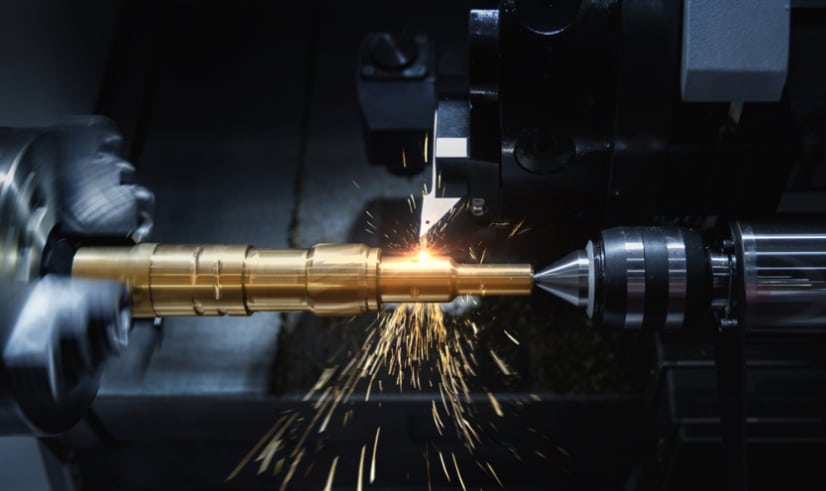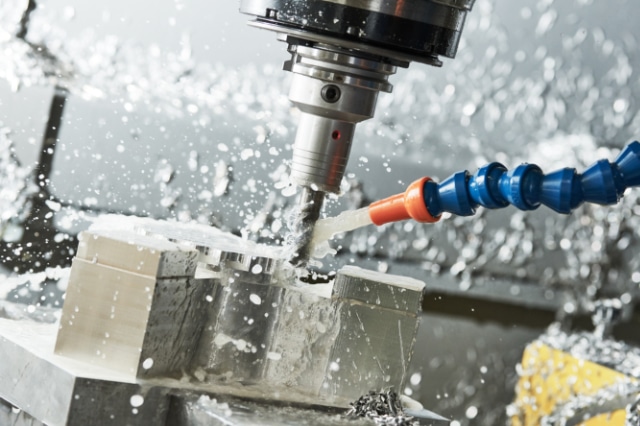CNC Machining
To understand the major differences between CNC turning vs. CNC milling, you must understand the meaning of CNC machining and what it stands for. It’s true that “CNC Machining” is an umbrella term for both turning and milling. You can expect customers to ask for CNC machining services rather than directly ask for CNC turning or milling. It’s technically going to be up to the manufacturer to choose what method will be best based on the customer's request.
Plus, you can expect the manufacturer to choose one method that best fits the customer's preferences and requirements for the project. But what does “CNC” stand for? It stands for Computer Numerical Control, which involves giving the machine instructions. This controls the grinder, lathes, mills, and routers.
What is CNC Turning?
CNC Turning is a machining process that involves the use of computer-controlled machines to remove excess material from a workpiece in order to achieve a desired shape or form. The process is based on the use of a lathe, which is a machine tool designed to rotate a workpiece around a fixed axis while a cutting tool is used to remove material from the surface of the workpiece.
The key advantage of CNC turning is its precision and consistency. The computer-controlled machines allow for the production of complex shapes and contours with high accuracy and repeatability, making it ideal for the production of large quantities of parts with tight tolerances.
In the CNC turning process, the workpiece is clamped in place and rotated while a cutting tool is brought into contact with the material to remove material from the surface. The cutting tool is controlled by a computer program, which determines the path of the tool and the amount of material to be removed at each step. As a result, parts with intricate designs and precise tolerances can be produced.
CNC turning is commonly used in the production of shafts, hollow tubes, and cylinder-shaped parts, as mentioned before. However, it can also be used to produce a wide range of other parts, including gears, bearings, and other components for a variety of industries, including automotive, aerospace, and medical device manufacturing.


What is CNC Milling?
CNC milling is a manufacturing process that involves removing material from a workpiece and shaping it into the desired shape using computer-controlled machines. This process differs from CNC turning, as it uses a cutting tool that moves in multiple directions, allowing for greater precision and complexity in the finished product. In CNC milling, the workpiece is fixed in place while the cutting tool moves along multiple axes to remove material. The machine is controlled by a computer program that precisely determines the movement and positioning of the cutting tool, allowing for the creation of parts with intricate shapes and designs. The cutting tool can move along the X, Y, and Z axes, allowing for greater flexibility and the ability to create complex parts with a high degree of accuracy. CNC milling machines can perform a variety of cutting methods, including face milling, end milling, and hollow milling. Face milling is used to cut a flat surface into the workpiece, while end milling is used to cut flat-bottomed cavities or create corners with a radius. Hollow milling is used to cut a hollow cavity into the workpiece. CNC milling is ideal for the production of complex components, such as intricate mechanisms and parts with intricate shapes and designs. It can be used to create a wide range of products, including automotive components, medical devices, and aerospace parts.
What is the Difference Between CNC Milling and Turning
To simplify it, the main difference between CNC turning and CNC milling would be the parts that move. CNC turning requires the tools to stay in place as the material moves, while CNC milling involves the material staying in place as the tools move. This does mean that there are smaller differences in the project itself. For example, CNC turning is used for conical surfaces, while CNC milling is best for irregular surfaces.
CNC turning is best suited for creating cylindrical or round parts, such as shafts or bolts. This is because the turning machine spins the material while a stationary cutting tool shapes it. In contrast, CNC milling is better for creating complex 3D geometries, such as molds or prototypes, because the cutting tool can move in multiple directions to shape the material.
Another difference between CNC turning and CNC milling is the type of machines used. Turning machines typically have a spindle that rotates on a horizontal or vertical axis, while milling machines have a stationary cutting tool and a worktable that can move in multiple directions.
Overall, both CNC milling and turning are important manufacturing processes that are used to create a variety of parts and products. The choice between CNC turning or milling depends on the specific requirements of the project, such as size, complexity, and material type.
Which Should You Choose?
In the end, it will be up to you and the projects your customers are requesting from you. These two milling processes have advantages, so there may always be a chance that both will need to be used within a project.
However, if you are looking for a simpler and faster way to create illustrations, vector may be the better option. It allows you to easily adjust and edit the shapes of your product without losing quality.
On the other hand, if your customers are looking for more complex and realistic illustrations, raster may be the way to go. It has the ability to create more detailed and textured product, which is great for complex designs.
Ultimately, it is important to understand the strengths and weaknesses of each method and choose the one that best fits the needs of your project and customer.
Bellcliffe engineering, with extensive experience in CNC milling and CNC turning, can provide you with professional consulting to determine which method of CNC turning or CNC milling, or even both, is the best choice for your project based on your project specifications. If you have any questions, please contact our skilled team at Bellcliffe Engineering.